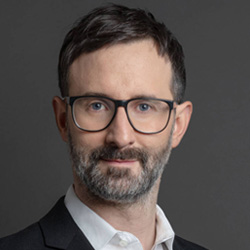Danny Forster
Architect. TV host. Producer. Director. Professor.
DF&A
Architect. TV host. Producer. Director. Speaker. Professor. Danny Forster is all these things, and through them all he has become a global advocate for architecture. The field of architecture may not appear to need much help: buildings surround us. But that very ubiquity has made it almost invisible; we move in and around buildings but barely notice them. Through his persistent and passionate advocacy, Danny gets people to notice, understand, and value the built environment.
This quest began when Danny was hired, while still pursuing his master’s in architecture at Harvard’s Graduate School of Design, to host a television show about impressive feats of construction and engineering. The show would become Build It Bigger, one of Discovery Channel’s most popular series, and run for nine seasons, during which Danny traveled to more than fifty countries, exploring everything from record-breaking skyscrapers to cutting-edge sports stadiums, from airports to tunnels to impossibly long bridges. Besides offering a matchless education for an aspiring architect, Build It Bigger taught Danny how to talk about architecture so an audience wouldn’t just understand how and why a building was designed a certain way, it would care. The key was inviting them inside the process–not just saying what’s important, but showing them in concrete and engaging ways.
In 2010, Danny conceived and co-produced with Steven Spielberg a six-part documentary on the aftermath of 9/11: Rising: Rebuilding Ground Zero. The Emmy-award-winning series brought viewers behind the scenes of the massive building project and helped them wrestle with its historic and emotional significance. As a New Yorker, Danny was grateful to be able to respond to the seismic event he and his city had experienced. And he was honored that his firm, Danny Forster & Architecture, was chosen to design a tower adjacent to the World Trade Center campus.
In approaching that project, Danny brought with him the ambition and sense of unlimited possibility created by years of exploring the most incredible architecture on earth. His frame of reference was simple: greatness at the global level. To him, that’s what architecture was, and is.
If your frame of reference is that wide, even building codes and zoning laws seem more like challenges than like limits. His only inflexible rule is to build something that both meets and transcends its program, contributing to the life of its city and to the discipline of architecture.
The resulting, award-winning tower catapulted him and his firm into an era of high-octane productivity that saw Danny designing towers at Hudson Yards and Columbus Circle in New York, master plans in Charlotte and Dallas, a five-star resort on the island of Nevis, and the tallest modular hotel in the world. He brings to each project that original sense of limitlessness–as well as with the energy, intensity, and engagement that viewers responded to in his Build It Bigger days. The man hanging off the side of a skyscraper in Kuwait, gesticulating about the wonders of architecture, is the man clients encounter in conference rooms and on construction sites, working with them to make their buildings better than they thought possible.
Danny also continues to find ways to promote architectural literacy–to teach people how to read a building, not just look at it. He teaches graduate architecture courses at Harvard and Syracuse, as well, and he is happy to keynote professional conferences, but he is particularly driven to speak on behalf of his profession rather than to it. He speaks all over the world, from the TED stage to the fourth-grade classroom, and produces and hosts TV projects about architecture and culture. How China Works I & II dive deep into the Chinese building boom and subsequent social upheaval; Prefab Nation explores the growing modular building trend; PBS’s Revolutions investigates inventions that transformed worlds.
Sometimes that involves disrupting the traditional way of doing business. In several of its more recent projects, DF&A has embraced modular construction as a way to merge deep functionality with beauty and import. The firm’s modular tower in Manhattan is a perfect example of why this underutilized building technique should command the respect of the industry and the public. Since investigating post-Katrina houses a decade ago, Danny has been a committed proponent for modular construction; as an advocate, he hopes to get people to discard their preconceived notions of pre-fab and see the potential of modular. But as an architect, he’s aware that, ultimately, it’s his buildings that will do the talking.
